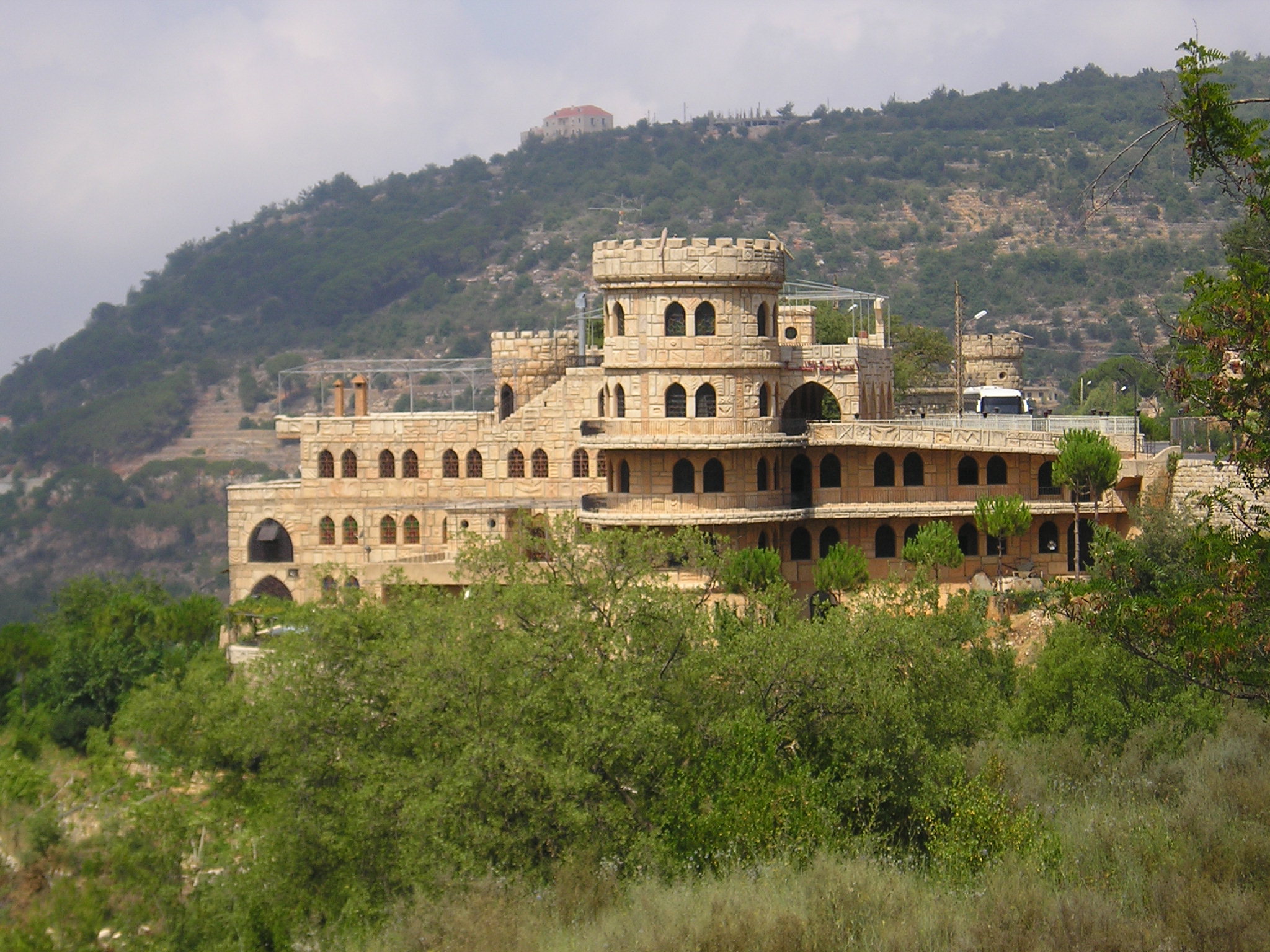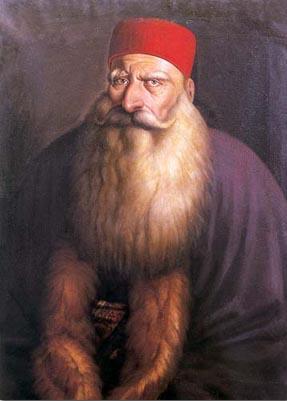|
Chouf Ouchouf
Chouf (also spelled Shouf, Shuf or Chuf, in ''Jabal ash-Shouf''; french: La Montagne du Chouf) is a historic region of Lebanon, as well as an administrative district in the governorate ( muhafazat) of Mount Lebanon. Geography Located south-east of Beirut, the region comprises a narrow coastal strip notable for the Christian town of Damour, and the valleys and mountains of the western slopes of Jabal Barouk, the name of the local Mount Lebanon massif, on which the largest forest of Cedars of Lebanon is found. The mountains are high enough to receive snow. History The Emirs of Lebanon used to have their residence in Chouf, most notably Druze Emir Fakhr al-Din II, who attained considerable power and acted with significant autonomy from the Ottoman Empire in the 17th century. He is often referred to as the founder of modern Lebanon, although his area of influence and later control included parts of current Israel and Syria. Other emirs include the more controversial Bachir Che ... [...More Info...] [...Related Items...] OR: [Wikipedia] [Google] [Baidu] |
Governorates Of Lebanon
Lebanon is divided into nine governorates (''muhafazah''). Each governorate is headed by a governor (''muhafiz''): All of the governorates except for Beirut and Akkar are divided into districts, which are further subdivided into municipalities. The newest governorate is Keserwan-Jbeil, which was gazetted on 7 September 2017 but whose first governor, Pauline Deeb, was not appointed until 2020. Implementation of the next most recently created governorates, Akkar and Baalbek-Hermel, also remains ongoing since the appointment of their first governors in 2014. See also * Politics of Lebanon References External links Lebanon 1 Governorates, Lebanon Governorates A governorate is an administrative division of a state. It is headed by a governor. As English-speaking nations tend to call regions administered by governors either states or provinces, the term ''governorate'' is often used in translation from ... Subdivisions of Lebanon {{Lebanon-geo-stub ... [...More Info...] [...Related Items...] OR: [Wikipedia] [Google] [Baidu] |
Deir Al Qamar
Deir al-Qamar ( ar, دَيْر الْقَمَر, lit=Monastery of the moon, translit=Dayr al-qamar), is a city south-east of Beirut in south-central Lebanon. It is located five kilometres outside of Beiteddine in the Chouf District of the Mount Lebanon Governorate at 800 m of average altitude. History Crusader period The oldest written reference to Deir el Qamar (''Deir elcamar'' or ''Deir elchamar'') goes back to 1257 and 1261 in the deeds of ''Julian of Shouf'' and ''Andrew of Shouf'' selling their lands and villages in their lordship of Shouf to the Theutonic Order as reported in ''Tabulae Ordinis Theutonici''. Ottoman period During the 16th to 18th centuries, Deir al-Qamar was the capital and the residence of the Emirate of Mount Lebanon. It is also notable for its 15th-century Fakhreddine Mosque, Fakhreddine II Palace, and the palace of the Emir Yusuf Shihab - today housing the Municipal Council. A 17th-century synagogue is still standing in the village, although closed ... [...More Info...] [...Related Items...] OR: [Wikipedia] [Google] [Baidu] |
Arabic
Arabic (, ' ; , ' or ) is a Semitic languages, Semitic language spoken primarily across the Arab world.Semitic languages: an international handbook / edited by Stefan Weninger; in collaboration with Geoffrey Khan, Michael P. Streck, Janet C. E.Watson; Walter de Gruyter GmbH & Co. KG, Berlin/Boston, 2011. Having emerged in the 1st century, it is named after the Arabs, Arab people; the term "Arab" was initially used to describe those living in the Arabian Peninsula, as perceived by geographers from ancient Greece. Since the 7th century, Arabic has been characterized by diglossia, with an opposition between a standard Prestige (sociolinguistics), prestige language—i.e., Literary Arabic: Modern Standard Arabic (MSA) or Classical Arabic—and diverse vernacular varieties, which serve as First language, mother tongues. Colloquial dialects vary significantly from MSA, impeding mutual intelligibility. MSA is only acquired through formal education and is not spoken natively. It is ... [...More Info...] [...Related Items...] OR: [Wikipedia] [Google] [Baidu] |
Mountain War
The Mountain War ( ar, حرب الجبل , ''Harb al-Jabal''), also known as the War of the Mountain and Guerre de la Montagne in French language, French, was a subconflict between the Lebanese Civil War#Second phase of the war.2C 1982-1983, 1982–83 phase of the Lebanese Civil War and the Lebanese Civil War#Third phase of the war.2C 1984-1989, 1984–89 phase of the Lebanese Civil War, which occurred at the mountainous Chouf District located south-east of the Lebanese Capital Beirut. It pitted the Christianity in Lebanon, Christian Lebanese Forces (militia), Lebanese Forces militia (LF) and the official Lebanese Armed Forces (LAF) against a coalition of anti-government Islam in Lebanon, Muslim leftist militias led by the Druze in Lebanon, Druze Progressive Socialist Party (PSP), backed by the Palestine Liberation Organization (PLO) and Syria. Hostilities began when the LF and the Lebanese Armed Forces, LAF entered the predominantly Druze in Lebanon, Druze Chouf district to bri ... [...More Info...] [...Related Items...] OR: [Wikipedia] [Google] [Baidu] |
Lebanese Civil War
The Lebanese Civil War ( ar, الحرب الأهلية اللبنانية, translit=Al-Ḥarb al-Ahliyyah al-Libnāniyyah) was a multifaceted armed conflict that took place from 1975 to 1990. It resulted in an estimated 120,000 fatalities and an exodus of almost one million people from Lebanon. The diversity of the Lebanese population played a notable role in the lead-up to and during the conflict: Sunni Muslims and Christians comprised the majority in the coastal cities; Shia Muslims were primarily based in the south and the Beqaa Valley in the east; and Druze and Christians populated the country's mountainous areas. The Lebanese government had been run under the significant influence of elites within the Maronite Christian community. The link between politics and religion had been reinforced under the French Mandate from 1920 to 1943, and the country's parliamentary structure favoured a leading position for its Christian-majority population. However, the country had a ... [...More Info...] [...Related Items...] OR: [Wikipedia] [Google] [Baidu] |
Moukhtara
, alternate_name = , image = HARVEY(1861) p008 PALACE OF SAID BAG JUMBULAH AT MOKTARAH.jpg , alt = , caption = The Jumblatt family palace in Moukhtara, 1861 , map_type = Lebanon , map_alt = , latitude = , longitude = , map_size = , location =30 miles from Beirut, Lebanon , region = Chouf District, Mount Lebanon Governorate , coordinates = , type = , part_of = Settlement , length = , width = , area = , height = , builder = , material = tools, flint, bone, ceramics , built = , abandoned = , epochs = PPNB, Neolithic , cultures = , dependency_of = , occupants = , event = , excavations = 1963 , archaeologists = J. Cauvin , condition = ruins , ownership = , management = , public_access = Yes , website = , notes = Moukhtara ( ar, المختارة) is a small town in the Chouf District of the Mount Lebanon Governorate of Lebanon. The town's inhabitants are divided between Druze and Christians. It is the hometown of Walid Jumblatt, the leader of Lebanon's Progressive Soc ... [...More Info...] [...Related Items...] OR: [Wikipedia] [Google] [Baidu] |
Walid Jumblatt
Walid Kamal Jumblatt ( ar, وليد جنبلاط; born 7 August 1949) is a Lebanese Druze politician and former militia commander who has been leading the Progressive Socialist Party since 1977. While leading the Lebanese National Resistance Front and allying with the Amal Movement during the Lebanese Civil War, he worked closely with Suleiman Frangieh to oppose Amine Gemayel's rule as president in 1983. After the civil war, he initially supported Syria but later led an anti-Assad stance during the start of the Syrian Civil War. He is still active in politics, most recently leading his party, the Progressive Socialist Party (PSP) in the 2022 Lebanese general election. Early life and education Jumblatt was born in August 1949, the son of the PSP's founder Kamal Jumblatt. He is the maternal grandson of Emir Shakib Arslan. Walid Jumblatt graduated from the American University of Beirut with a bachelor's degree in political science and public administration in 1972. Career Upon ... [...More Info...] [...Related Items...] OR: [Wikipedia] [Google] [Baidu] |
Lebanese Druze
Lebanese Druze ( ar, دروز لبنان, durūz lubnān) are Lebanese people who are Druze. The Druze faith is a monotheistic and Abrahamic religion, and an ethnoreligious esoteric group originating from the Near East who self identify as unitarians ( ar, موحدين, muwaḥḥidīn). The Lebanese Druze people are believed to constitute about 5.2 percentLebanon 2015 International Religious Freedom Report U.S. Department of State. Retrieved on 2019-04-23. of the total population of Lebanon and have around 1.5 million members worldwide. The Druze, who refer to themselves as al-Muwahhideen, or "believers in one God," are concentrated in the rural, mountainous areas east and south of |
Mount Lebanon Mutasarrifate
The Mount Lebanon Mutasarrifate (1861–1918, ar, مُتَصَرِّفِيَّة جَبَل لُبْنَان, translit=Mutasarrifiyyat Jabal Lubnān; ) was one of the Ottoman Empire's subdivisions following the Tanzimat reform. After 1861, there existed an autonomous Mount Lebanon with a Christian mutasarrıf, which had been created as a homeland for the Maronites under European diplomatic pressure following the 1860 massacres. The Maronite Catholics and the Druze founded modern Lebanon in the early eighteenth century, through the ruling and social system known as the "Maronite-Druze dualism" in Mount Lebanon. This system came during the era of administrative organizations initiated by Sultan Abdul Majeed I in an attempt to extricate the Ottoman State from its internal problems, and it was approved after the major sectarian strife of 1860 and the numerous massacres that occurred in Mount Lebanon, Damascus, the Bekaa Valley and Jabal Amel among Muslims and Christians in gener ... [...More Info...] [...Related Items...] OR: [Wikipedia] [Google] [Baidu] |
Catholic
The Catholic Church, also known as the Roman Catholic Church, is the largest Christian church, with 1.3 billion baptized Catholics worldwide . It is among the world's oldest and largest international institutions, and has played a prominent role in the history and development of Western civilization.O'Collins, p. v (preface). The church consists of 24 ''sui iuris'' churches, including the Latin Church and 23 Eastern Catholic Churches, which comprise almost 3,500 dioceses and eparchies located around the world. The pope, who is the bishop of Rome, is the chief pastor of the church. The bishopric of Rome, known as the Holy See, is the central governing authority of the church. The administrative body of the Holy See, the Roman Curia, has its principal offices in Vatican City, a small enclave of the Italian city of Rome, of which the pope is head of state. The core beliefs of Catholicism are found in the Nicene Creed. The Catholic Church teaches that it is th ... [...More Info...] [...Related Items...] OR: [Wikipedia] [Google] [Baidu] |
Maronite
The Maronites ( ar, الموارنة; syr, ܡܖ̈ܘܢܝܐ) are a Christian ethnoreligious group native to the Eastern Mediterranean and Levant region of the Middle East, whose members traditionally belong to the Maronite Church, with the largest concentration long residing near Mount Lebanon in modern Lebanon. The Maronite Church is an Eastern Catholic particular church in full communion with the Pope and the rest of the Catholic Church, whose membership also includes non-ethnic Maronites. The Maronites derive their name from the Syriac Christian saint Maron, some of whose followers migrated to the area of Mount Lebanon from their previous place of residence around the area of Antioch, and established the nucleus of the Antiochene Syriac Maronite Church. Christianity in Lebanon has a long and continuous history. Biblical scriptures purport that Peter and Paul evangelized the Phoenicians, whom they affiliated to the ancient patriarchate of Antioch. The spread of Christianity ... [...More Info...] [...Related Items...] OR: [Wikipedia] [Google] [Baidu] |

.png)







.jpg)
